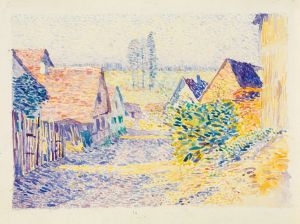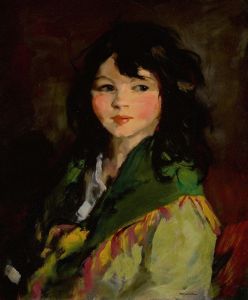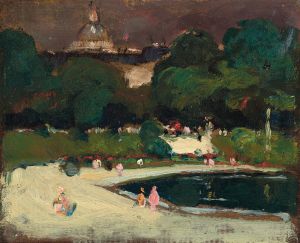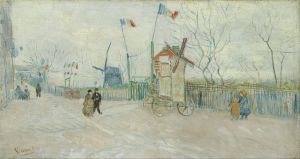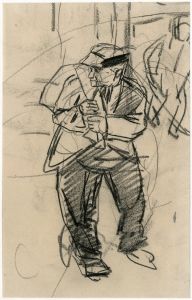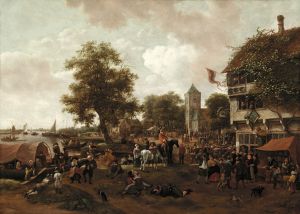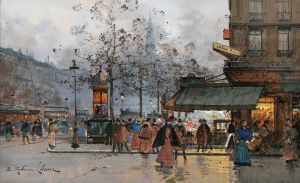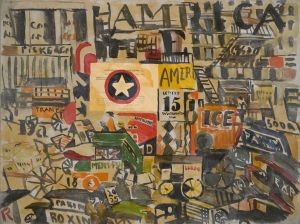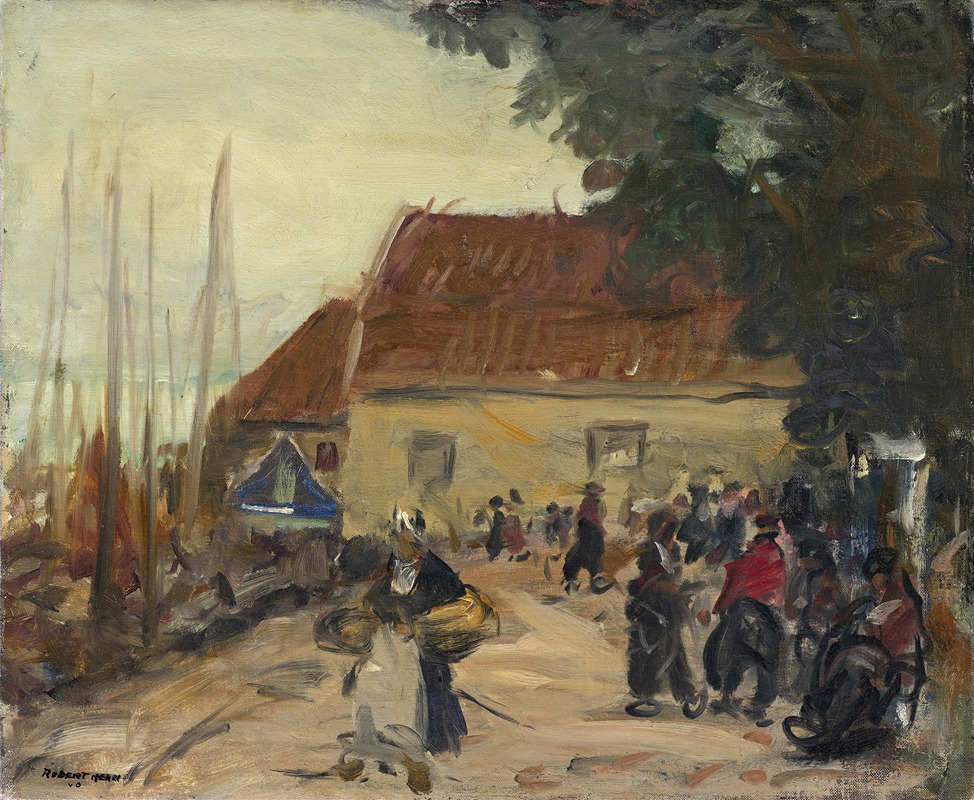
Volendam Street Scene
A hand-painted replica of Robert Henri’s masterpiece Volendam Street Scene, meticulously crafted by professional artists to capture the true essence of the original. Each piece is created with museum-quality canvas and rare mineral pigments, carefully painted by experienced artists with delicate brushstrokes and rich, layered colors to perfectly recreate the texture of the original artwork. Unlike machine-printed reproductions, this hand-painted version brings the painting to life, infused with the artist’s emotions and skill in every stroke. Whether for personal collection or home decoration, it instantly elevates the artistic atmosphere of any space.
"Volendam Street Scene" is a painting by the American artist Robert Henri, created in 1910. Henri was a prominent figure in the Ashcan School, a movement known for its realistic and unidealized depictions of everyday life. This painting is one of many works Henri produced during his travels in Europe, where he sought to capture the essence of the places he visited.
The painting depicts a street scene in Volendam, a small fishing village in the Netherlands. Volendam was a popular destination for artists at the time due to its picturesque scenery and traditional Dutch culture. Henri's work captures the charm and character of the village, focusing on the daily life of its inhabitants.
In "Volendam Street Scene," Henri employs a loose, expressive brushwork that conveys a sense of immediacy and spontaneity. The composition is dynamic, with figures and buildings arranged in a way that leads the viewer's eye through the scene. The use of light and shadow adds depth and dimension to the painting, enhancing the realism of the depiction.
Henri's choice of subject matter reflects his interest in portraying ordinary people and their environments. The figures in the painting are engaged in various activities, such as walking, talking, and going about their daily routines. This focus on everyday life is a hallmark of Henri's work and the Ashcan School in general.
The color palette of "Volendam Street Scene" is dominated by earthy tones, with splashes of brighter colors that draw attention to certain elements within the composition. This use of color helps to create a lively and vibrant atmosphere, capturing the essence of the village.
Robert Henri was not only a painter but also an influential teacher and writer. His ideas about art and his commitment to depicting real life had a significant impact on American art in the early 20th century. Henri believed that art should be accessible and relevant to everyday people, a philosophy that is evident in "Volendam Street Scene."
The painting is part of the collection at the Columbus Museum of Art in Columbus, Ohio. It is considered an important example of Henri's work and a valuable representation of the Ashcan School's approach to art. The museum's collection includes several other works by Henri, providing a broader context for understanding his artistic development and contributions.
In summary, "Volendam Street Scene" by Robert Henri is a notable work that captures the everyday life of a Dutch fishing village with a sense of immediacy and realism. Henri's expressive brushwork, dynamic composition, and focus on ordinary people are key elements that define this painting and his broader body of work. The painting remains an important piece within the Columbus Museum of Art's collection, reflecting Henri's impact on American art and his dedication to portraying the world as he saw it.





